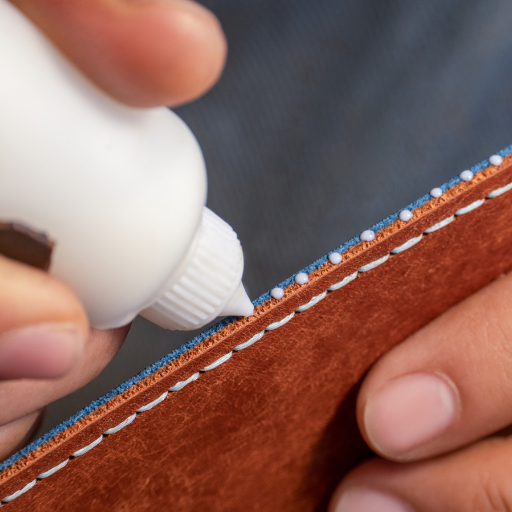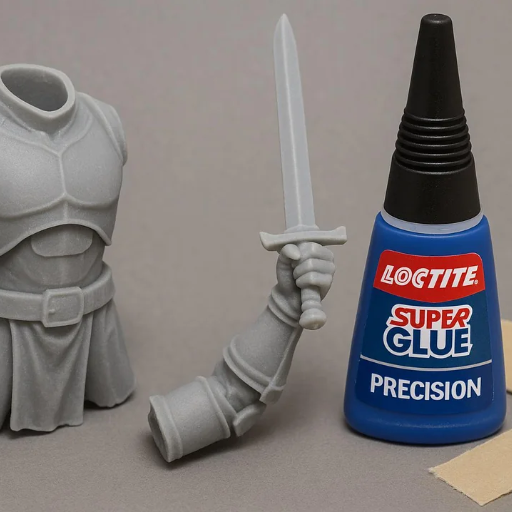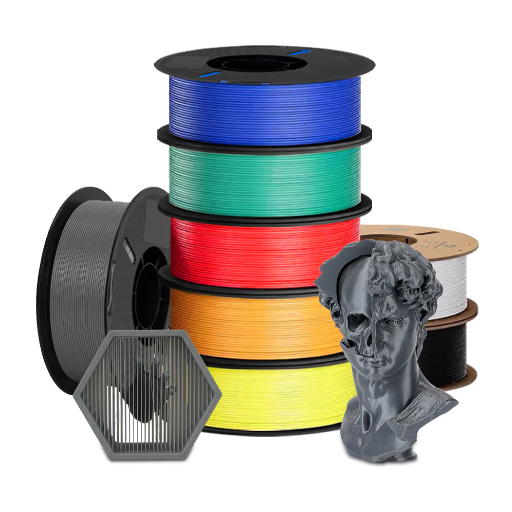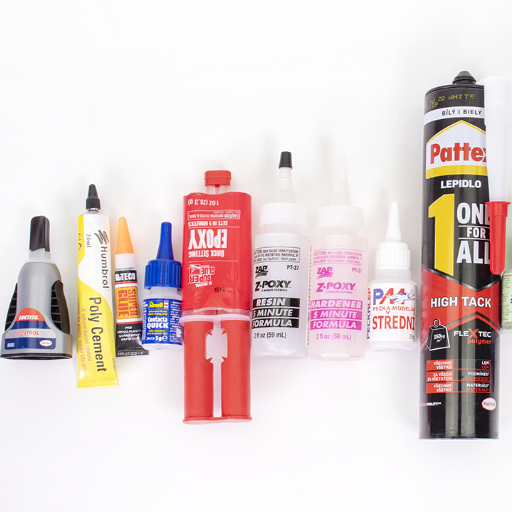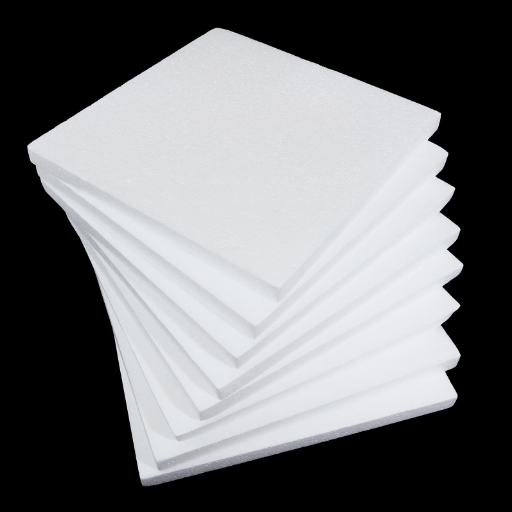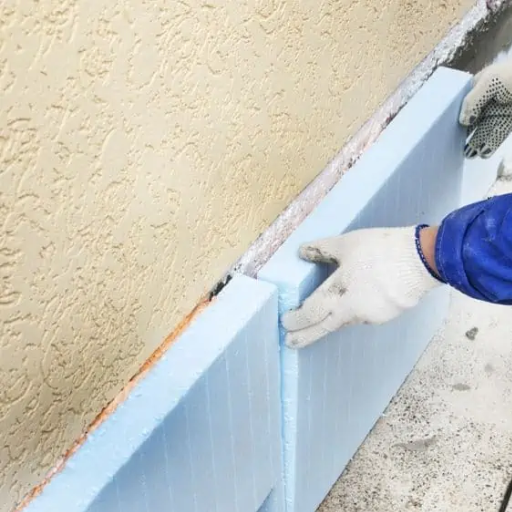Bonding glass to metal comes with its own set of problems primarily because of the different characteristics of these materials. Their junctions tend to be weak due to differing thermal expansion coefficients and materials’ strength. The brittle and rigid nature of glass coupled with the flexibility of metal makes it even more challenging. Therefore, there needs to be an analysis of the adhesives best suited for that application with regards to the chemical properties and bonding methods of the materials.
The readers are taken through the major issues revolving around the glass to metal bonding process. This is done through reviewing issues when choosing an adhesive, such as compatibility, requirement for other processes like surface treatment, tensile strength created, and resistance to the environment. We will outline various types of adhesives, epoxies, silicones, or UV cured adhesives and their benefits and disadvantages. In the end, the reader will be able to select the most effective adhesive for the bonds designed and the performance expected while ensuring satisfactory results.
What is the Best Adhesive for Glass to Metal?

Choosing the right glue for attaching glass to metal, considering individual application details, environmental requirements, and material composition, involves some considerations. Because of their strong bonding capabilities and resilience to environmental stresses like temperature and moisture, epoxy adhesives are widely used. Silicones are also extremely important since they provide great flexibility and resistance to vibrations, which is ideal for situations with significant thermal expansion differences. Another specially suited option is UV cured adhesives, which are well suited for needs with fast curing time and minimal processing. The glue must also provide suitable tensile and shear strength, be compatible with both glass and metal, and function under expected environmental conditions. Achieving effective adhesion also involves surface preparation such as cleaning and priming. Finally, finding an effective adhesive requires balancing these factors with the limits and needs of the specific application.
Understanding Glass to Metal Bonding
Bonding glass to metal utilizes specific adhesive bonds managed through mechanical, chemical, and physical interplay. Each of these together aids in achieving a pleasing cohesive connection and different components function at their best when the right adhesive is present. Epoxy adhesives are quite favored with this glue because of their excellent mechanical and chemical qualities and how they handle changing environments. When serious thermal expansion concerning glass and metal is an issue, silicone adhesives are preferred due to their wonderful flexibility and vibration damping capabilities. For simple and faster curing process, UV-cured adhesives are best suited for those projects which require speedy turnarounds.
Regular cleaning or maintenance is equally essential in determining the durability and effectiveness of the bond. Cleansing grants the elimination of contaminants like dirt, grease, or any pieces of garbage that may obstruct bonding. An additional achievement that augments bond strength further is known as adhesion primer or simply priming. Compatibility-enhancing polymers undergo the treated surfaces of the materials, which enable modification chemically to bond with each other. Furthermore, adhesives should be tested against specific application parameters such as temperature, moisture, and required strength against mechanical stress, which includes pulling and pushing forces.
In every application, the choice of adhesive and the one used hinges on certain external factors. A combination of some surface treatment techniques together with proper selection of the adhesive guarantees with reliability a successful permanent joint between the glass and metal parts.
Choosing the Right Adhesive
Choosing the suitable adhesive requires thorough scrutiny of the application region, the materials being used as substrates, and the different bonding needs for the project. Some of the more important things to examine themselves are the adhesion materials like glass and metal as well as the working conditions – extremes of temperature, moisture, UV damage, and mechanical strain. For glass-to-metal construction, epoxies are robustly used as they are stronger than the other adhesives and they are also not affected by the surrounding conditions. Others like silicone adhesives or polyurethane have their place too, especially when flexibility or vibration damping is desired.
Surface preparation is considered a key step; achieving the desired bond will depend on the level of cleanliness and, if needed, the use of primers or activators that can provide the adhesive a better chance. The best means of application of the adhesive also needs to be considered, whether it must be heated to above a certain temperature, or exposed to light, or simply require ambient conditions to set. It is further recommended that actual conditions of use be tested to check adhesive performance and durability over the product’s life. These parameters along with information from manufacturer details will provide the best chances at success for optimal selection and use of the adhesive.
Factors to Consider When Selecting Adhesives
In the process of choosing an adhesive, it is very important to assess the parts that need to be joined together and their details like voids, surface energy, and flexibility. For example, the adhesive’s properties and the substrates need to be compatible with each other so that there is reliable adhesion and performance over time. In addition, environmental factors like temperature, humidity, ultraviolet light exposure, and chemical exposure also need to be checked because they can impact the adhesive’s effectiveness and robustness.
Another critical aspect is the mechanical forces that the bond will withstand, which include shear, peel, and tensile forces. This assesses the need for a rigid, like epoxy or a flexible adhesive like silicone. Equally as important is the cure time; some adhesives have to be bonded rapidly for fast production environments and some may require a longer time to set for more precise manipulation.
Lastly, the form of application and economic aspects are also included in the decision. Some adhesives need specific dispensing or curing equipment like a heating or UV lamp. Trying to satisfy all performance requirements, in addition to production limits and cost, helps to find a proper effective and practical adhesive.
How to Glue Glass to Metal Effectively?

Proper adhesive selection along with pre-adhesion surface preparations are critical for proper adhesion of glass and metal. Start by cleaning the glass and metal surfaces to get rid of any dirt, oils, and debris. For this, Isopropyl alcohol is commonly applied since it offers a clean bonding surface. After surface cleaning, determine what kind of adhesive is suitable for the job. Generally, Epoxy adhesives are recommended for stronger, more durable bonds where rigid bonds are required, whereas silicone-based adhesives are suitable for more flexible situations offering resistance to thermal expansion. Make certain the adhesive is evenly spread to avoid weakness in the bond. Follow the curing instructions of the manufacturer, which may include time and temperature or UV light curing to obtain maximum adhesion. Precise placement of the surfaces during bonding is very important in achieving a durable, well connected joint.
Step-by-Step Guide: How to Glue Glass
- Identify the Appropriate Adhesive
Choose an adhesive specifically designed for glass applications. Epoxy adhesives are ideal for rigid, heavy-duty bonds, while silicone-based adhesives provide flexibility and resistance to stress caused by temperature changes.
- Prepare the Surfaces
Clean both the glass surfaces and any other material (e.g., metal, wood) to ensure they are free of dust, grease, and debris. Use Isopropyl alcohol and a lint-free cloth to achieve a clean, residue-free surface.
- Roughen the Surface (Optional)
If bonding to a non-smooth surface like metal, lightly sand it with fine-grit sandpaper to enhance adhesion. Avoid damaging the glass surface during this process.
- Apply the Adhesive
Dispense the adhesive evenly across the bonding area. For added precision, consider using a specialized applicator. Be cautious not to overapply, as excess adhesive can weaken the bond or create an uneven finish.
- Align and Bond the Surfaces
Carefully position the pieces together. Ensure correct alignment on the first attempt, as repositioning can weaken the bond. Apply consistent, firm pressure to hold the surfaces in place.
- Allow Proper Curing
Follow the adhesive manufacturer’s instructions regarding curing time, humidity conditions, and, if necessary, temperature or UV light exposure. This step is crucial to ensure the bond reaches full strength.
- Inspect the Bond
Once cured, examine the bond for stability and durability. Remove any excess adhesive around the bonded area using a small blade or solvent compatible with the adhesive.
By adhering to these detailed and methodical steps, you can achieve a durable, precise, and professional-quality glass bond suitable for a variety of applications.
Tips for Ensuring a Strong Bond
- Select the Right Adhesive
Different adhesives are formulated for specific materials and conditions. Choose one that explicitly states compatibility with glass and meets your application’s requirements.
- Prepare Surfaces Thoroughly
Ensure all bonding surfaces are clean, dry, and free of oils, dust, or grease. Use isopropyl alcohol or a suitable cleaner for best results, avoiding residues that can weaken adhesion.
- Maintain Optimal Conditions
Adhesives perform best within their recommended temperature and humidity ranges. Avoid extreme conditions, as they can impair curing and bonding strength.
- Apply Adhesive Evenly
Use a controlled application technique to prevent overuse or underuse. An even, thin layer typically yields a stronger and more uniform bond.
- Avoid Disturbing During Curing
Once aligned, do not disturb the bonded surfaces until the adhesive has fully cured. Follow the manufacturer’s curing time instructions carefully to achieve optimal strength.
- Double-Check Manufacturer Guidelines
Always refer to the adhesive’s technical datasheet for detailed instructions and best practices for your specific application, as these vary across products.
Implementing these tips ensures a reliable and lasting bond that meets high-quality standards, suitable for demanding professional and domestic applications alike.
Common Mistakes to Avoid When Using Super Glue
- Using Too Much or Too Little Glue
Applying an excessive amount of glue can lead to weak bonds as it may take longer to cure, and excess adhesive can create a mess. Conversely, using too little glue can fail to provide adequate bonding strength. Apply a small, controlled amount to ensure proper adhesion.
- Failing to Prepare Surfaces
Surface preparation is critical when using super glue. Failing to clean surfaces thoroughly of dirt, grease, or moisture can severely compromise the bonding performance. Use a clean, dry cloth or appropriate solvent to ensure both surfaces are smooth and free of contaminants.
- Bonding Non-Compatible Materials
Not all materials adhere well with super glue. Plastic types like polyethylene (PE) or polypropylene (PP) are not ideal unless treated with a primer. Always verify material compatibility to achieve the desired results.
- Ignoring Setting and Curing Times
Rushing the process by moving or disturbing the bonded surfaces before the glue cures can weaken the joint. Adhere to the product-specific curing times mentioned in the manufacturer’s guidelines to ensure maximum strength.
- Exposing Super Glue to Extreme Conditions
Extreme heat, cold, or humidity can impair the efficacy of super glue. Store and use it within the recommended conditions for optimal performance and longevity.
Avoiding these mistakes helps maximize the adhesive’s effectiveness, ensuring strong, durable, and professional-grade results. Always refer to the manufacturer’s datasheet for comprehensive usage instructions tailored to the specific product.
What are the Top Product Recommendations for Metal to Glass?

- Loctite Glass Glue
Specifically designed for bonding glass, it provides a strong and durable bond between glass and metal. It is water-resistant and ideal for small repairs.
- Gorilla Super Glue Gel
This gel-based adhesive offers excellent versatility and precision. It forms a strong bond between glass and metal and resists impact.
- E6000 Industrial Adhesive
Known for its industrial-grade strength, E6000 creates a flexible yet robust bond that works well for both glass and metal applications.
- Silicone Adhesives (e.g., Permatex Clear RTV Silicone Adhesive)
Silicone-based adhesives are excellent for situations requiring some elasticity. They work effectively in bonding glass to metal while resisting water and thermal stress.
These products are widely regarded for their high performance in metal-to-glass applications. Ensure to follow the manufacturer’s instructions for optimal results.
Review of Loctite Adhesives
Recognized for their advanced engineering and dependable working characteristics, Loctite adhesives are known around the world. In particular, Loctite Glass Glue is uniquely designed for glass to metal bonding. It is ideal for most minor repairs because of its strength and water-resistant qualities. Moreover, the Loctite formula yields a colorless bond which makes the application invisibly professional and strong.
As cited from several sources, Loctite has an effortlessly simple application process and begins working immediately, curing to full strength within twenty-four hours. It works best on clean surfaces, so it is highly recommended for best results to have surfaces that are dry and clean of dirt and dust. The most critical users praise its ability to bond fragile items like glass by giving support to the surfaces without being visible. Because of all these reasons, Loctite Glass Glue is the handiest solution for bonding glass to metal.
Why Epoxy is a Top Choice
From construction to automotive, epoxy adhesives have proven their versatility due to exceptional strength, ease of use, and self-leveling nature over a wide variety of applications. Epoxy creates bonds that are strong, waterproof, and resistant to various chemicals, making this adhesive perfect where long-term, dependable use is needed under difficult conditions. This adhesive performs best with metals, plastics, wood, glass, and many other materials, making it ideal for industrial, commercial, and domestic use.
One of the main assets of epoxy is the two-component system, consisting of a resin and a hardener which, depending on the formulation, can be designed to allow customized curing times along with tailored mechanical properties. This feature helps improve the tensile strength of the epoxy further, making it suitable for advanced level application needing specific temperature or adhesive property tolerances. Furthermore, where complex assemblies are to be joined, any gaps or surface irregularity can easily be filled by epoxy adhesives.
Rated highly for their ability to withstand environmental factors like UV radiation and extreme temperatures, epoxies are also well-suited for indoor and outdoor applications. Their capacity to create a strong, permanent bond and remain unbothered by moisture or chemicals makes them essential in construction, automotive repairs, and electronics manufacturing. Ultimately, the technical versatility and reliability of epoxy adhesive reaffirms its position as one of the foremost adhesives in the market.
Exploring Construction Adhesive Options
Adequate construction adhesive selection necessitates an assessment of the options’ bond strength, material compatibility, curing period, as well as resistance to hostile environmental conditions. Construction adhesive is capable of binding wood, metal, concrete, calico, as well as drywall. Polyurethane adhesives are some of the most commonly used construction adhesives. They are useful outdoors because they weather extremely well compared to other options. Similarly, water-based adhesives are eco-friendly due to being low-VOC and are only useful indoors most of the time.
There are also adhesives that concern specific applications like epoxy, which is more useful for construction because of its high tensile strength. These are commonly employed where heavy structural loads need to be supported alongside chemical and moisture resistance as well. Silicone adhesives are ideal when a bond needs to be sealed yet flexibility is needed some time later. They excel in scenarios that offer movement for plumbing fixtures, exhaust fans, or refrigerator vents.
In the end, making sure that the joints will be able to withstand the exposure and mechanical stress is paramount. Guaranteeing performance reliability along with durability necessitates reviewing the features of the bonding product, structural materials, and environmental hostile factors.
Can Super Glue Be Used for Glass to Metal?

Under certain conditions, glass can be glued to metal using super glue, otherwise known as cyanoacrylate adhesive. It creates an effective rapid bond which is great for small delicate applications. However, long-term effectiveness is not guaranteed and would decrease under conditions such as moisture, changing temperatures, or mechanical strain. For these kinds of durable and permanent bonds, epoxy or silicone would be more effective due to their superior strength and resistance to environmental factors.
Pros and Cons of Using Super Glue
Pros:
- Quick Bonding Time: Super glue cures rapidly, often within seconds to a few minutes, making it ideal for immediate repairs and small projects.
- Ease of Application: Its precise applicators and low viscosity allow for accurate application, even in tight spaces or on intricate surfaces.
- Effective for Non-Porous Materials: Cyanoacrylate adhesives bond particularly well with non-porous surfaces such as metal, plastic, and glass.
- Cost-Effective: Super glue is widely available and affordable for everyday household use.
Cons:
- Susceptibility to Environmental Conditions: Super glue is sensitive to moisture, extreme temperatures, and prolonged exposure to UV light, which can weaken the bond over time.
- Limited Longevity: It is not suitable for heavy-duty or load-bearing applications where strain or movement occurs frequently.
- Brittle Bond: The adhesive forms a rigid bond that lacks flexibility, making it prone to cracking under stress or vibration.
- Safety and Handling: Super glue can bond skin instantly and produce fumes that may irritate eyes or respiratory systems during application.
For applications requiring durability, flexibility, or resistance to environmental factors, epoxy or silicone adhesives are typically a more robust choice, especially for bonding dissimilar materials like glass to metal.
Situations Where Super Glue Excels
Super glue works best in situations that require fast bonding, such as small repair jobs. Because of super glue’s rapid curing time and exceptional adhesion to non-porous materials, it performs admirably when mending ceramic, plastic, or metal objects. Super glue’s precision applicators allow for delicate tasks, such as piece jewelry repair and model part assembly. Also, super glue works well when fixing household items that require minimal load or movement, such as reinforcing chipped pieces of décor or sealing fractures of small glass objects. Super glue is a great option for making quick, time-sensitive fixes.
How to Remove Cured Adhesive Safely
To extract cured adhesive, it is necessary to exercise caution and use the appropriate equipment so as not to damage the surfaces underneath. For stubborn and hard materials, for example, metal, glass, and even ceramics, start by pouring some nail polish remover, which is acetone-based. Industrial strength adhesive removers will also work at an equal price. Let the solvent rest for somewhere around two to three minutes to loosen the bond. Once the bond is softened, use a razor blade or plastic scraper held at a shallow angle and gently scrape out the adhesive.
In terms of more sensitive surfaces like fabrics, washed out paints, and even art work, using acetone would be inappropriate. Instead, use a combination of warm water along with mild dish soap to get rid of the adhesive. Whenever you try to use the cloth to scrub, ave as much patience as possible and in the event that getting rid of the adhesive takes some time, be soft with the cloth or sponge and there should be no damage caused. Remember, patience is the key.
In the event where the adhesive is firmly bonded with the skin, do not ever pulling directly as there is bound to be negative consequences. Soak the skin in warm soapy water and immerse for a few minutes while comming into contact with rub or peal as the rest of the bonds are rigid. In case of powerful bonds, do use acetone while also being careful, and always wash the skin effectively.
How Do You Ensure a Crystal Clear Finish?

To achieve a flawless tidy finish, the first step is to clean the surface area of any dust, debris, or leftover adhesive. Start by using a lint-free cloth to ensure no fibers are left behind. For glass and transparent materials, a high-quality glass cleaner or isopropyl alcohol will work well when wiped in a consistent motion with a microfiber cloth. When using these materials, be cautious of applying too much at once since that tends to create unwanted streaks. If needed, polish or clear coat your softest applicator while ensuring full coverage is achieved. Finally, to maintain clarity, allow for sufficient time in a dust-free environment for drying or curing. Having a controlled environment and paying attention to detail ensures the highest quality and best results.
Preparing Surfaces for a Crystal Clear Bond
The optimal adhesion is accomplished through tri-level cleansing, conditioning, and in some cases, modification of the substrate which results in a bond friendly surface. To achieve a crystal clear bond, surface adhesion must be scrupulously cleaned beforehand. Begin by solvent washing dirt, grease, oils, and other contaminants utilizing a cleaning solution. Isopropyl alcohol usually works best, although some materials may be better suited to acetone. Evaluate the surfaces next; a smooth surface may require some form of mechanical degradation like sanding or bead blasting before bonding. Primers and adhesive promoters also aid certain materials by enhancing the apparent bond strength. Environmental factors such as humidity and temperature must be regulated following the guidance of the adhesive manufacturer as well. Following these procedures guarantees enhanced rigidity, transparency, and effectiveness on the joint, which will be achieved across multiple uses.
The Role of Clean and Dry Surfaces
Keeping the surfaces clean and dry is relevant for hygienic and safety reasons. Clean surfaces mitigate the buildup of sickening microorganisms, which can cause infections to spread, especially in the healthcare and food preparation sectors as well as laboratory environments. Cleaning simply means to get rid of visible materials, while proper disinfection means eliminating pathogens that may remain on the surface. On top of that, dry surfaces prevent the growth of bacteria and fungi because they thrive in moist settings. This not only enhances the durability of materials, but also decreases the probability of slip-and-fall accidents occurring in public areas or workplaces, hence promoting safety. Rigorous cleaning combined with effective drying ensures a healthy, efficient, and safe environment.
Applying Adhesive for Best Results
For the best possible outcome when using adhesive, there is a logical order of operations that account for the substance being used, the type of adhesive, and environmental factors. The first step is to ensure that the surfaces to be bonded are clean of dust, grease, or any debris. Contaminants may jeopardize adhesion. Cleansing solvents or prepared bonded area cleaners provided by the adhesive’s manufacturer should be used. Surfaces must be dried completely before moving on to the next step.
The next step is selecting an adhesive that goes well with the materials that need to be joined and the working environment. Strength, curing time, and resistance to moisture, temperature, or chemicals must be taken into consideration. Remember to always read and follow the instructions provided by the manufacturer. The application procedure and curing requirements must be followed. The adhesive must be applied in a consistent pattern. Appropriate tools such as spatulas, brushes, and applicator nozzles should be used to apply the adhesive. Gaps and bubbles should be avoided as they can weaken the bond.
When merging the parts, smooth their surfaces and place them in contact while applying uniform pressure. In the case of some adhesives, it may be necessary to use a clamp to maintain the bonding surfaces in position during curing. Some adhesives take only a few minutes to reach full strength while others can take several hours or even days. In any case, the adhesive bond needs to be left untouched for a reasonable amount of time anticipating future load stresses. Best practices, as outlined above, should be followed for reliable and durable results in adhesive applications.
References
Frequently Asked Questions (FAQ)
Q: What is the best adhesive to glue metal to glass?
A: The best adhesive to glue metal to glass is a two-part epoxy, like Lepage Marine Epoxy, which provides a high-strength bond and can adhere to non-porous surfaces like glass and metal effectively.
Q: How do I prepare the surfaces before applying glass glue?
A: To prepare the surfaces, ensure they are clean and dry. Use a damp cloth or paper towel to remove any debris, and if needed, sand lightly to create a rough texture for better adhesion.
Q: Can I use a syringe to apply the adhesive?
A: Yes, a dual syringe can be used to apply the adhesive accurately. It helps in mixing the resin and hardener in the correct proportions for a strong bond.
Q: Is there a specific type of glass glue suitable for ceramics and metal?
A: An epoxy adhesive is suitable for bonding ceramics to metal, providing a rigid bond that can withstand various conditions, including moisture.
Q: How long does it take for the adhesive to cure fully?
A: While the initial set can occur in one minute, a full cure may take up to 24 hours. It’s crucial to allow the adhesive to set undisturbed for the best results.
Q: What should I do if I need to remove wet adhesive?
A: If you need to remove wet adhesive, use acetone on a disposable surface. For cured adhesive, carefully use a razor blade.
Q: Can I achieve a crystal-clear finish with this adhesive?
A: Yes, many adhesives like Lepage Marine Epoxy dry crystal clear, making them ideal for applications where appearance is important.
Q: How do I ensure a strong bond when using a two-part adhesive?
A: Mix the resin and hardener thoroughly according to instructions, and apply the epoxy evenly. Make sure the surfaces are properly aligned and clamped if necessary.
Q: Is it possible to apply the adhesive in a well-ventilated area?
A: Yes, applying adhesives in a well-ventilated area is recommended to avoid inhaling fumes and ensure a safer working environment.
Q: Does the adhesive shrink after drying?
A: Quality adhesives like Lepage Marine Epoxy are designed not to shrink after curing, ensuring a permanent bond between the materials.
















